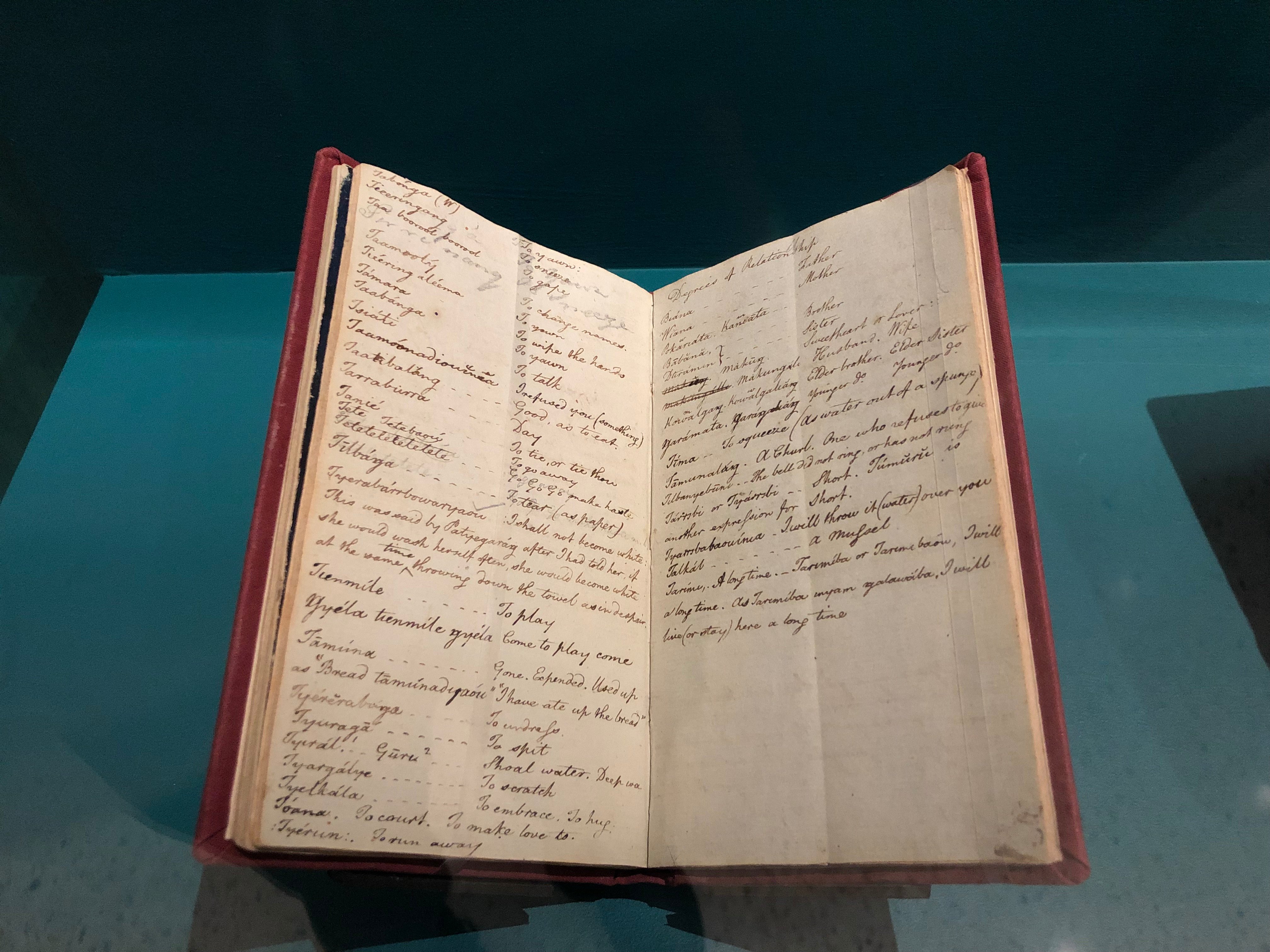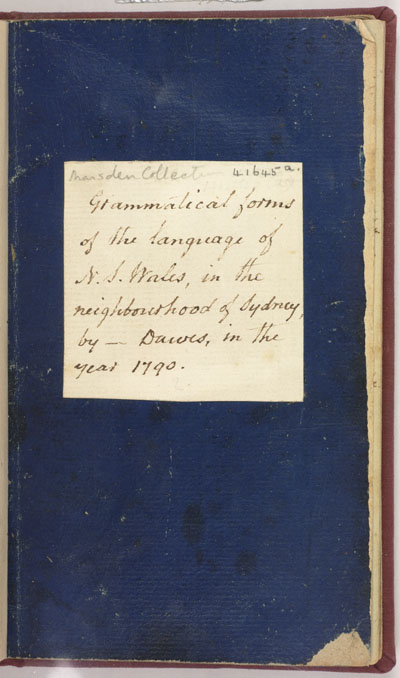The Dictionary of Sydney was archived in 2021.
Living Language: Country, Culture, Community
 Dawes' notebooks on display in the Living Language exhibition at the State Library of New South Wales
Dawes' notebooks on display in the Living Language exhibition at the State Library of New South Wales
Listen to Ronald and Tess on 2SER here
To put together a language exhibition has been a bit of a challenge. Exhibitions tend to be about something you can see and language is usually something you hear rather than see, but we've come up with a great mix of artefacts, pictures, audio and video that celebrates the resilience of our Aboriginal languages using original documents and interviews with language custodians on Country. As part of this mix, it's very exciting to have the notebooks of Lieutenant William Dawes back in the country. Dawes was an officer of the marines on the First Fleet. He was a young man, about 26 or 27, and a scientist and astronomer, but he was also very interested in language and the local Aboriginal people. He became friends with the local people and made lots of notes about his conversations with them. As part of his astronomical work, Dawes moved out of the main part of the colony to the area now known as Dawes Point, where the southern pylon of the Harbour Bridge site. He built an observatory and lived in a small shack where the local people visited him. A young woman named Patyegarang, who we believe was about 15 or 16, became particularly good friends with Dawes, and she taught him the Sydney language. Grammatical forms of the language of N. S. Wales, in the neighbourhood of Sydney, by _ Dawes, in the year 1790, courtesy SOAS University of London
Grammatical forms of the language of N. S. Wales, in the neighbourhood of Sydney, by _ Dawes, in the year 1790, courtesy SOAS University of London

Categories
Blog
2SER Breakfast
Aboriginal history
Aboriginal languages
community
country
culture
Exhibitions
indigenous history
Living Language: Country
New South Wales
Ronald Briggs
State Library of New South Wales
sydney history
Tess Connery
UNESCO International Year of Indigenous Languages

